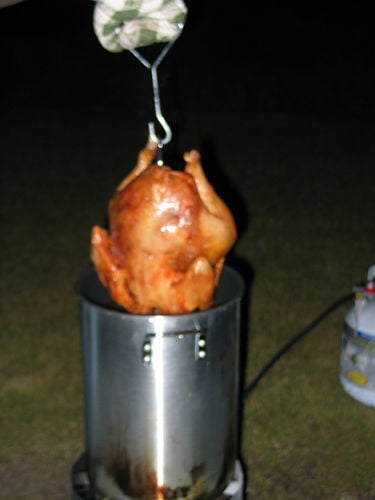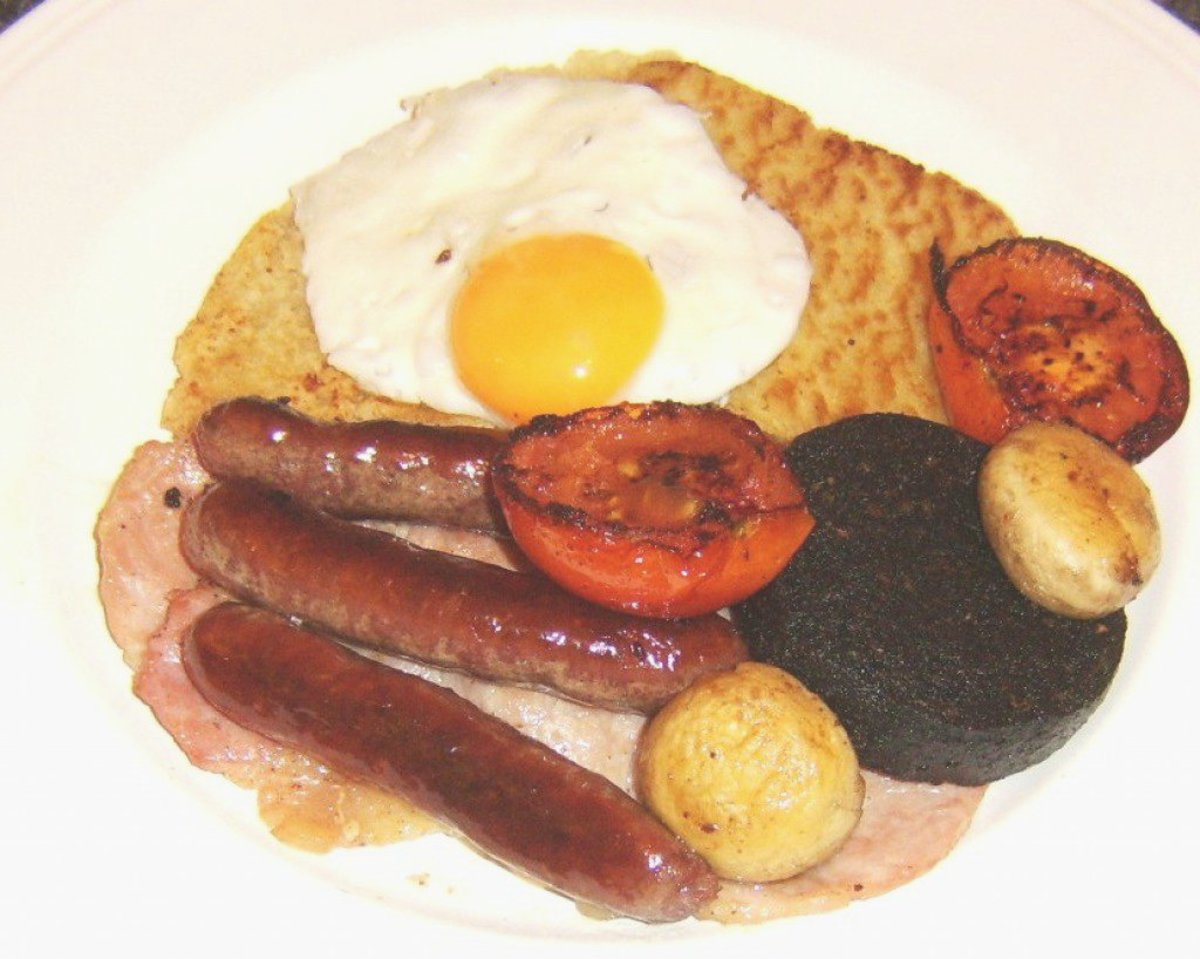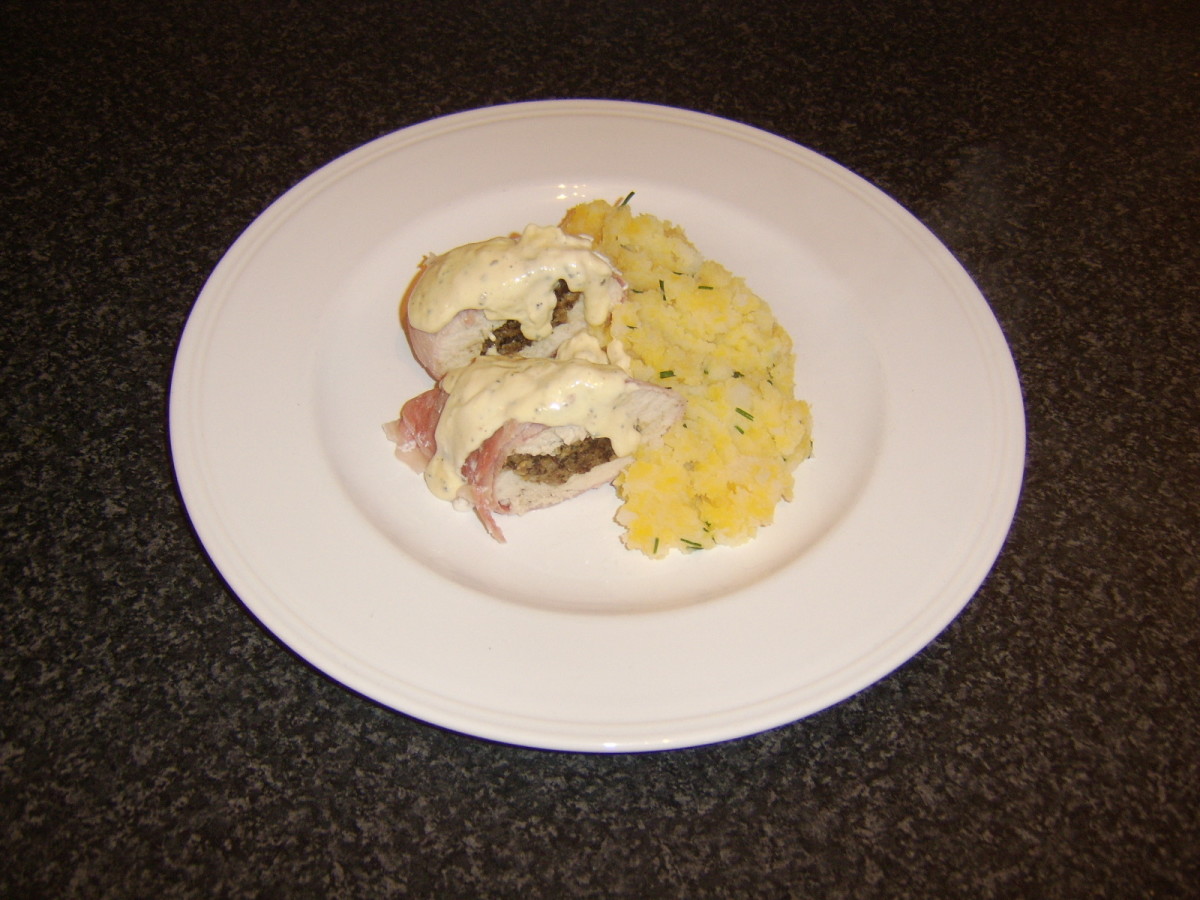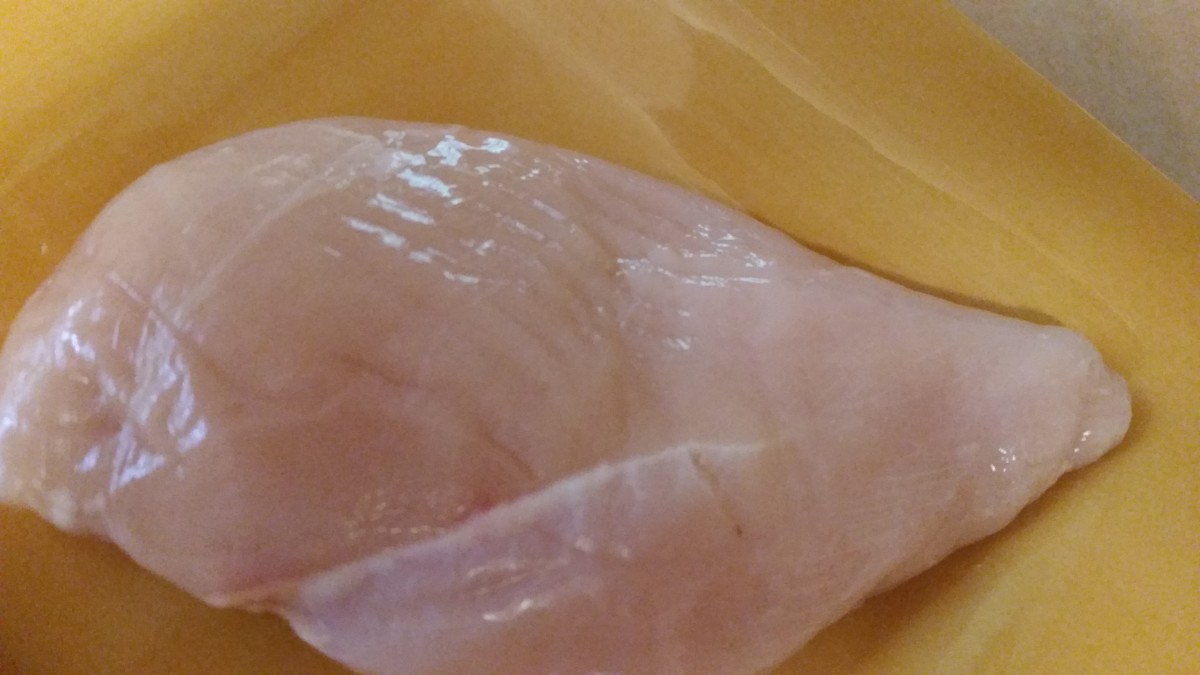How to Deep Fry a Turkey for Thanksgiving

Why Deep Fry a Turkey?
If you would have said you are frying a turkey a few years back, you probably would have gotten at least a few strange looks. Nowadays, pretty much everyone has at least heard of deep fried turkey.
So why would someone deep fry a turkey? Well, there are a few reasons. First, it's delicious. Fried turkey, done correctly, isn't greasy at all. It's moist and tender with a crispy skin. Thanksgiving turkey cooked the traditional way will sometimes end up dry and bland, even for more experienced cooks. Second, who enjoys sitting around for hours tending to the turkey in the oven? I knew someone who stayed up all night tending to her Thanksgiving turkey! Deep frying a turkey takes less than an hour! And third, guys seem to really enjoy doing it! Now that's a twist for Thanksgiving- the men help with the cooking!
Buy Turkey Fryers Kits Online and Save Big!
Where to Deep Fry a Turkey
People used to deep fry a turkey inside on their stoves. NEVER try that! Many houses have burnt down as a result. Frying a turkey is a tricky business, but now there are deep fry turkey kits that take away at least some of the risks.
Keep in mind, though, that UL (Underwriters Laboratories) has not certified a single turkey fryer as safe for cooking. They stated that all of the fryers could catch fire and/or explode. See the video below. So, keep this in mind if you do decide to deep fry a turkey.
Here are some tips for how to deep fry a turkey as safely as possible: First of all, always deep fry a turkey outside. If it has started raining or gotten too cold, absolutely don't move the process inside! I can't state this often enough.
The oil splatters and bubbles, so pick a safe place. Avoid roof overhangs or low hanging branches on trees. Don't put the turkey fryer close to anything flammable- your house, a shed, trees, etc,- just in case it does catch fire. And don't use it anywhere enclosed, such as a garage.
You should absolutely have a fire
extinguisher handy, just in case. Also, avoid concrete if you don't want
oil stains. Same thing for wood decks, plus they have the potential for
catching fire.
Turkey Fryer Kits
When you buy a turkey fryer kit, get one that has a pot that is at least 26 quarts for safety purposes.
If you want to marinate your fried turkey (recommended), get a fryer kit with an injector.
Be sure to
carefully read the instructions for your particular turkey fryer kit.
Follow them exactly, even if they differ from these instructions. All
turkey fryer kits are a bit different.
What Kind of Oil Do I Use to Deep Fry a Turkey?
The oil to use to deep fry a turkey is traditionally peanut oil. This is
because peanut oil delivers great taste, but also because it has a high
flash point, which means it is less likely to catch on fire. Some other
oils you can use to fry your turkey are canola and corn oil.
What Size Turkey Do I Use for Deep Frying?
Don't get a turkey that is more than 15 pounds. The main reason why is
because it takes longer to fry, and the skin can turn out overdone and
burnt. Plus, smaller birds are more safe to fry and easier to handle.
How Much Oil Do I Need to Deep Fry a Turkey?
Some turkey fryer kits have fill lines marked already. If yours doesn't, here's how to figure out how much oil you need. Put the whole turkey into the pot before adding any injector marinade or dry rub.
Add water until it completely covers the bird, plus a couple of inches. Take out the turkey. Now, use a ruler to measure the level of the water by measuring the distance from the water's surface to the top of the pot. This is how much oil you need.
To give you a general idea of how much
oil you need to fry a turkey, it will be somewhere around 3 - 6 gallons
of oil, depending on the size of the turkey.
How to Deep Fry a Turkey for Thanksgiving - Preparing the Turkey
To get your turkey ready for frying, first it has to be completely
thawed. A ten pound turkey will take a couple of days to completely thaw
in the refrigerator. Don't ignore this step, unless you want the fire
department at your door. Remove any giblets or anything inside the
turkey. If the turkey has an automatic popup timer, don't forget to
remove it, too.
If you decide to inject your turkey with a flavorful marinade, it's
best to do it the night before or at least a few hours before frying
your turkey. This way it works like a marinade and has time to permeate
the entire bird.
Before placing the turkey inside the turkey fryer, be sure that both the
turkey and the fryer are completely dry. Don't forget to dry out the
inner cavity, too. Any water drops at all will cause crazy splattering
that may hurt someone.
How to Deep Fry a Turkey for Thanksgiving
Use the included turkey basket or stand that should have come with your
turkey fryer kit to place the turkey into the fryer. Place the turkey so
that the neck is facing down. Then use the hook to gently lower the
turkey into the oil. Do this very slowly and carefully. If you don't,
the oil can boil up and out of the fryer. Be sure to wear a protective
apron, long sleeves, and heavy duty oven mitts or gloves when you do
this process.
The oil temperature will start to drop. Raise the burner to get the
temperature back up. But watch it carefully- if it gets above 450
degrees Fahrenheit, you've got a potential fire on your hands. Once it
gets back up to 350, lower it back down. Never close the lid while
frying the turkey.
How Long Does It Take to Deep Fry a Turkey?
Deep fried turkeys cook very quickly compared to baking a whole turkey in the oven. It takes approximately 3 - 3 1/2 minutes per pound to cook a turkey, 3 minutes per pound for smaller turkeys and 3 1/2 minutes per pound for larger turkeys.
Thanksgiving Cookbooks
How Do I Know if a Deep Fried Turkey Is Done?
When the turkey should be done, carefully remove it with the hook that
should have been in your turkey fryer kit. Again, wear protective gear,
like extra thick oven mitts and long sleeves. Lift it slowly and
carefully out of the fryer. Let it hang over the pot for a minute or so,
allowing the oil to drip off of it.
Check the internal temperature with a meat thermometer to make sure it's
done. This is a very important step. You don't want anybody sick with
food poisoning after bragging about your delicious deep fried turkey!
The breast meat should read 170 degrees Fahrenheit. If it doesn't, lower
the turkey back into the fryer for a few more minutes to get it
thoroughly cooked. Let the turkey sit covered for a few minutes before
carving and eating it.
How to Deep Fry a Turkey for Thanksgiving - After the Fact
After the turkey is removed, turn off the turkey fryer. Take the pot and put it on a level, heat resistant area that is away from children and pets. Let it cool. This will take a few hours.
The oil can be filtered
and reused after it has cooled.
And that's it. You can join the new tradition of deep fried turkey for
Thanksgiving! I don't think you will ever try making your Thanksgiving
turkey in the oven again.










